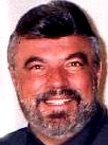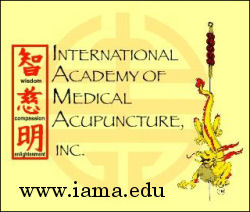Acupuncture & TCM Articles

Acupuncture Articles
by John A. Amaro L.Ac., Dipl.Ac.(NCCAOM), DC
 Dr. Amaro is an internationally known author, lecturer and practitioner beginning his practice of Acupuncture and Chiropractic in 1971. He has led 13 diplomatic Acupuncture study tours of The People's Republic of China escorting more than 500 doctors and practitioners. He has personally studied Acupuncture in nine separate Asian nations. Dr. Amaro is an internationally known author, lecturer and practitioner beginning his practice of Acupuncture and Chiropractic in 1971. He has led 13 diplomatic Acupuncture study tours of The People's Republic of China escorting more than 500 doctors and practitioners. He has personally studied Acupuncture in nine separate Asian nations.
He has received Certification in Acupuncture through the Columbia Institute of Chiropractic in 1973. This was one of the first Acupuncture postgraduate education programs for physicians in North America commencing in 1972.
He has been certified by the Waseda Acupuncture College in Tokyo, Japan in 1974 and graduated from the Chinese Medical Institute, Kowloon, China in 1976. He had previously taken postgraduate studies at the Tai Chung Medical School Taipei, China 1973.
Phoenix and Dragons and Tigers and Turtles or How to Save a Life
John A. Amaro L.Ac., Dipl.Ac.(NCCAOM), DC
Recently, I flew from Phoenix, Arizona to Miami Beach, Florida to present the beginning of a 100-hour acupuncture certification program.
To fly from Phoenix to Miami is a long flight, but a rather unremarkable trip. On this given day, however, I was told by the airline in order to fly to Miami, I would have to be rerouted north through Detroit instead of the usual southern route. The reason was an unusual fog which had seeped into the "Valley of the Sun," which was, in fact, the first fog of this magnitude in 40 years.
As I waited in the lounge for the afternoon flight to Detroit instead of my early morning flight to Miami, I couldn't help but wonder what fate had in store, as these circumstances were indeed unusual.
Being a student of Eastern philosophy, it has been said that "nothing happens by accident," to which my Western upbringing says, "Poppycock." But nonetheless, I stood armed, curious, and amused at my plight.
Thirty minutes into the flight from Detroit, just as I was slipping into a restful slumber, a gentleman in his early 60s came from the coach compartment to the first class cabin on his way to the restroom. Suddenly he turned, grabbed his chest, and collapsed in the aisle immediately next to my seat. Why this man elected to seek the restroom in the first class cabin, as opposed to the two unoccupied restrooms four aisles from his seat, may only be explained by "Eastern philosophy."
Having been a combat medic as well as a paramedic prior to my entering practice, this was not the first time I had witnessed this scenario. As I dropped to my knees to appraise the situation I became aware of the worst: This gentlemen had obviously suffered a massive heart attack; he presented all the classic signs of a coronary.
Even though my cramped position between the seats was not conducive to appropriate CPR, I was able to somehow manage and stayed with it for five minutes, at which time I began to lose all hope that he would recover. As I watched his family come to the stark realization that their father might die in the aisle of the airplane. I suddenly had an intense feeling of deja vu, recalling an incident which happened more than 20 years earlier; the feeling was so overwhelming it could not be ignored.
As a paramedic with an ambulance crew, my partner and I had answered a call a considerable distance from any hospital. A young man had obviously experienced a coronary and was non-responsive on our arrival. In those days ambulances were converted Cadillac station wagons used primarily for transporting and were not equipped with the sophisticated equipment we see today. As I worked on this young man, I could see his wife and three small children looking through the glass partition that separated the cab from the rear section where I was frantically administering CPR.
The stress and tension mounted; it was obvious I had lost the young man. Out of sheer desperation I stomped my foot on the floor of the ambulance yelling at him to respond. When I stomped on the floor, my heel came down directly on his fingers and I can still recall the sickening thud. Immediately, the victim began to respond with short, shallow respiration and a feeble but definite pulse. By the time we careened into the emergency room of the hospital, the man was breathing regularly and his pulse rate had returned to normal.
Several days later, while making another run to the same hospital, I inquired as to his status; I visited him in the intensive care unit, and he was sitting up and being prepared to be transferred to a private room -- bandaged fingers and all.
It wasn't until several years later that I began to understand what had happened that night in the back of the ambulance. The heart meridian used in acupuncture has its tonification point on the the small finger of the left hand, at the corner of the fingernail. This point has historically been used to restore energy to the heart and in fact is one of the most powerful points on the heart meridian. I had stomped on the man's finger, stimulating the tonification point known as the jing well point, the tsing point, akabane point, or -- closer to home -- Ht 9.
Now, 20 years later, as I tried to revive this heart attack victim on the cabin floor of a jet cruising at 35,000 feet, memories of that night in the ambulance came rushing back. I pressed the Ht 9 acupuncture point of his left small finger. I may have gotten carried away -- I noticed I had drawn blood -- however, at the same time I noticed he also drew a breath.
The pilot made an emergency landing at the Atlanta airport, where an ambulance and paramedics were waiting. By the time we reached Atlanta, the gentleman was responsive and wondering why he was on the floor.
Was it coincidence? Was I on that plane to save his life or was he on that plane to save the lives of countless others who, by reading this column in Dynamic Chiropractic, will ultimately have an impact on someone else? Armed with this knowledge, you may save the life of a stranger.
So why the title of this column, "Phoenix and Dragons and Tigers and Turtles?" In ancient acupuncture, the east and southerly directions relate to the "Phoenix and the Dragon," terms used for tonification; the west and north refer to the "Tiger and Turtle," terms used for sedation. Each of the 12 acupuncture meridians have both a tonification and sedation point which will inspire or disperse energy in the pathway. I stimulated the tonification point of each of the two subjects discussed with more than interesting results.
The technique of tonification and sedation is of the utmost importance in acupuncture/meridian therapy. In a later issue I will further discuss the overall significance of this concept.
In the meantime, be aware of the tonification point for the heart for emergency situations or when the heart is in obvious bradycardia -- it just may save a life.
| 